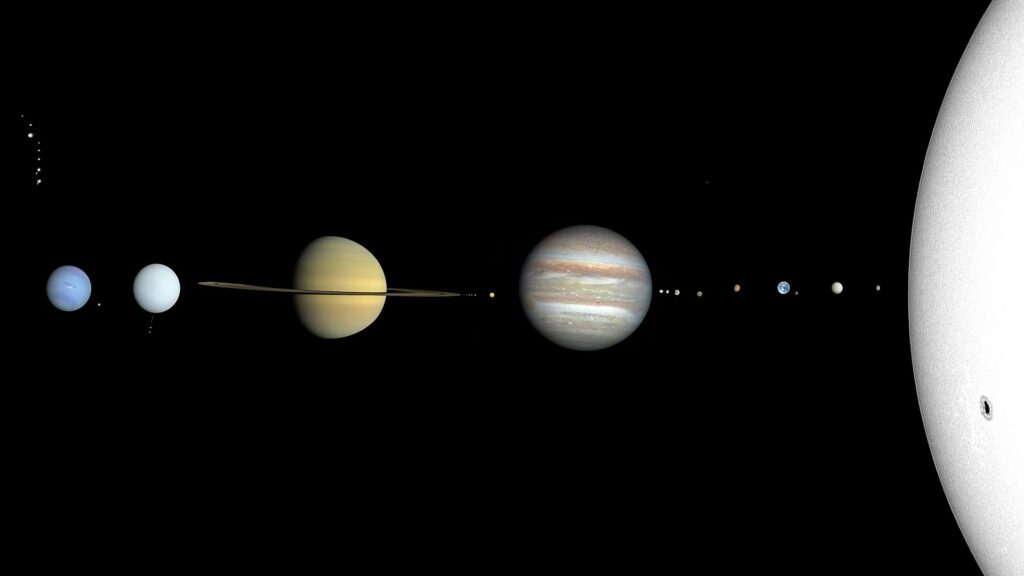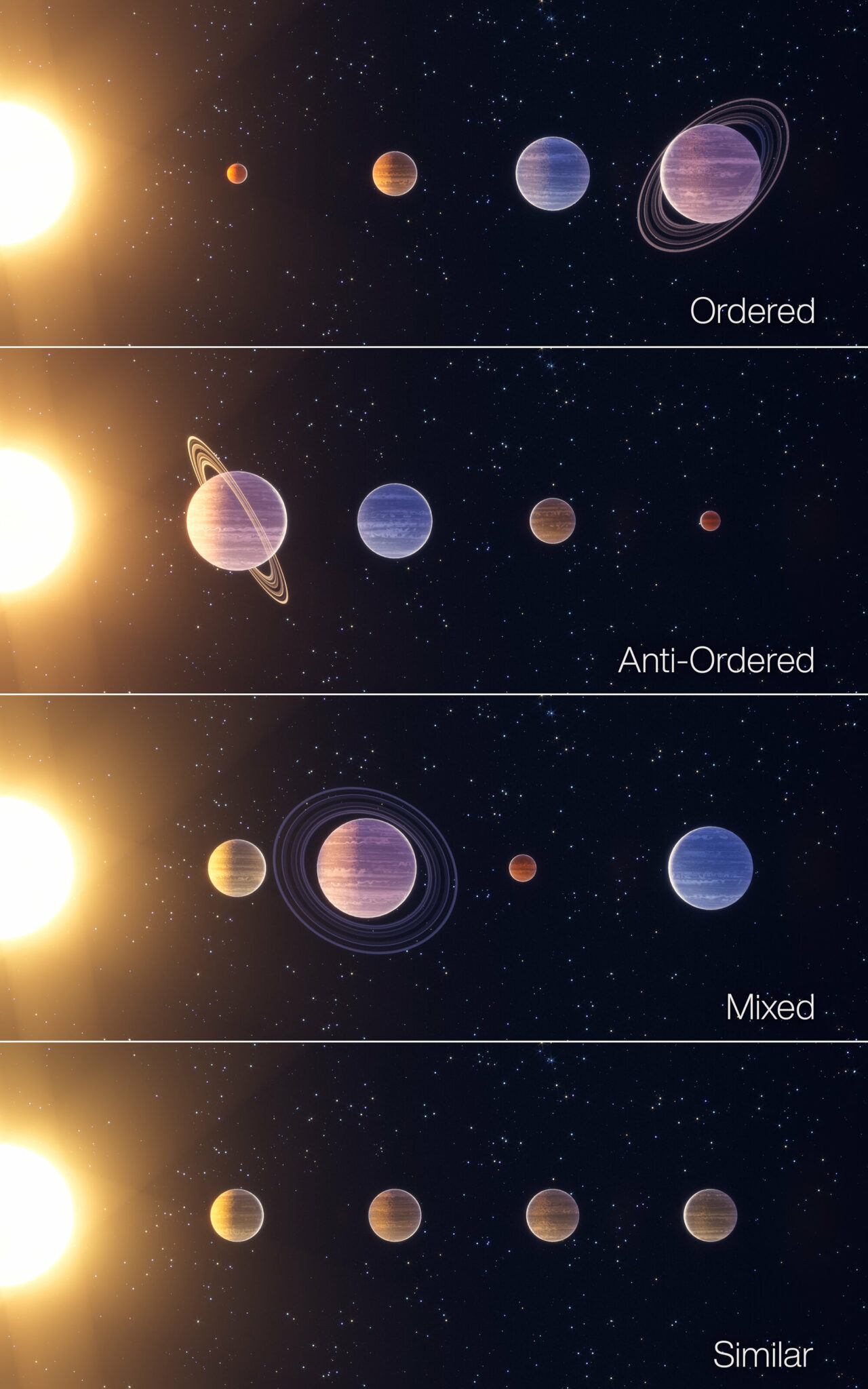A team of Swiss astronomers has developed a new classification scheme for planetary systems. It consists of four main classes.

Our Solar System has a very verified and intuitive structure. There are small rocky planets next to the Sun, followed by large gas giants, and then ice giants in even more distant orbits.
However, soon after the discovery of the first exoplanets, it became clear that such a configuration is not typical at all. Researchers have discovered many systems that are completely different from ours. The most common variant turns out to be systems resembling “peas in a pod”, in which the planets are similar in size and mass to their neighbors.
In an attempt to understand the situation, Swiss astronomers have developed a methodology for determining differences and similarities between planets of the same systems. The study shows that there are not two, but four main system architectures. They were called “similar”, “ordered”, “anti-ordered” and “mixed”.

“Similar” systems include systems in which planets have approximately the same mass. According to scientists, they are formed from low-mass protoplanetary disks around stars with a small amount of heavy elements. A classic example of a “similar” system is the famous Trappist-1.
“Ordered” systems are those in which the mass of planets tends to increase with distance from the star. This is our Solar System. In “anti-ordered” systems, the opposite is true, the mass of the planet decreases with distance from the star. Scientists believe that these architectures are formed from massive protoplanetary disks around stars containing a large number of heavy elements.
“Mixed” systems include systems in which the masses of components vary greatly from planet to planet. They arise from medium-sized protoplanetary disks.
It is worth noting that the results of the study surprise astronomers. The most common “similar” systems account for eight out of ten systems known to us. The most rarely encountered class turned out to be precisely “ordered” systems like the Solar One.
According to https://phys.org
Follow us on Twitter to get the most interesting space news in time
https://twitter.com/ust_magazine
